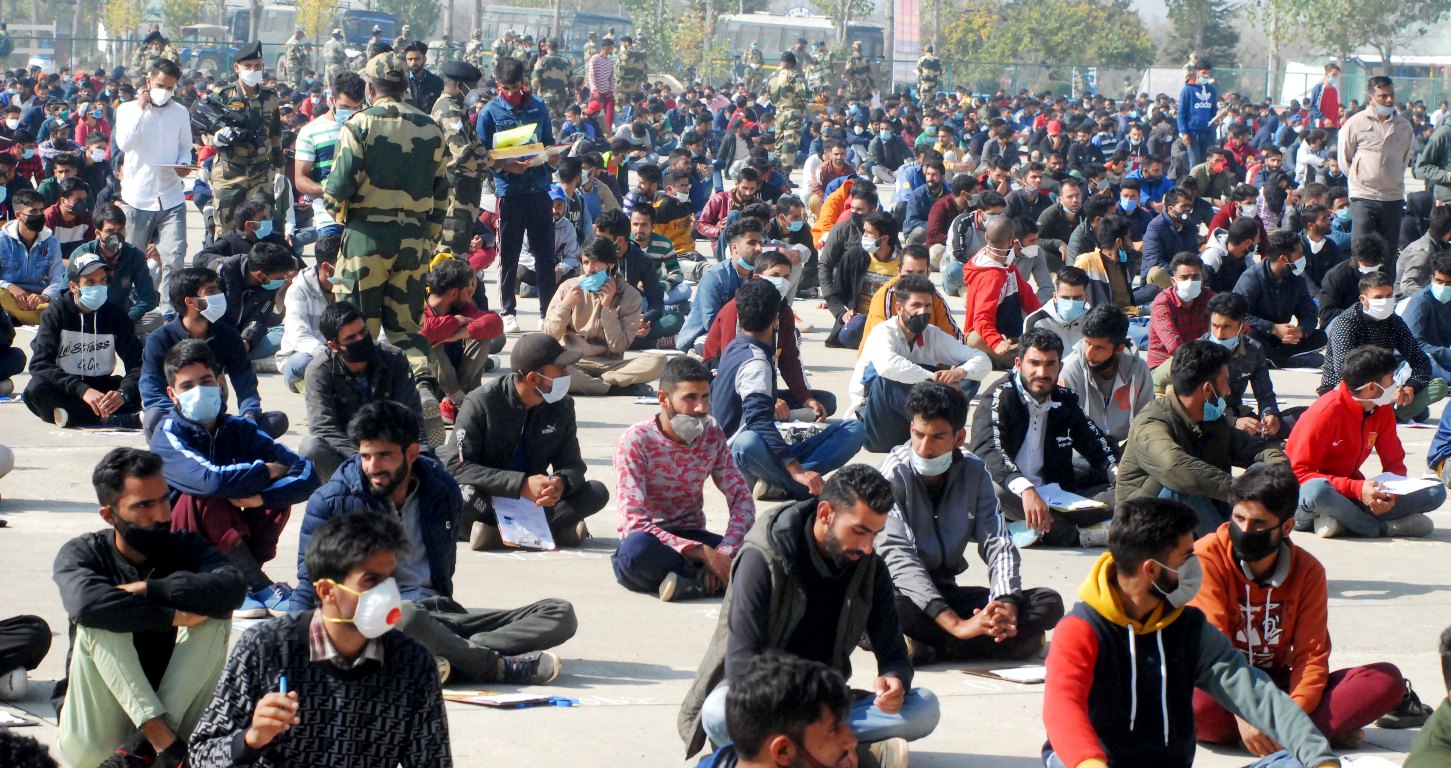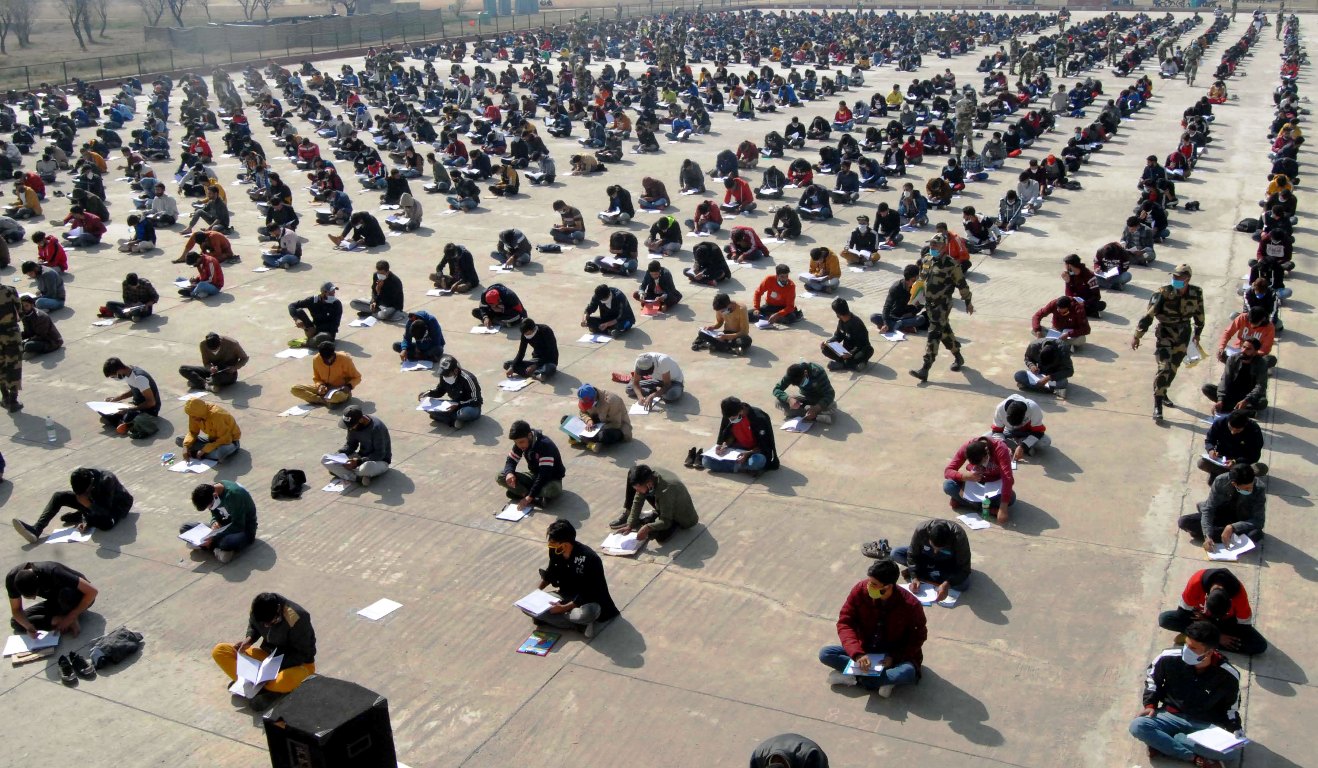by Muhammad Waseem Bhat
By 2022, the median age in India will be just 28, compared to 37 in China and Europe, and 49 in Japan.

India’s challenge on employment is getting tougher and tougher. Employment is now regarded by many as the central long-term challenge facing the country.
India has a low labour force participation rate (LFPR) by world standards. LFPR is defined as the number of persons looking for a job as a proportion of the working-age population (age group 15-59). As per International Labour Organisation (ILO) estimates, the world LFPR was around 61.8% in 2018 whereas the corresponding number for India is just 53.7%. In 2015-16, the LFPR for males in India was 75.5%, while that for females was a meagre 27.4%.
As per World Bank’s released South Asia Economic Focus report titled Jobless growth? India’s employment rate is 50%, which is significantly lower than the expected rate of about 60%. Further, the ILO report says that the number of workers in vulnerable forms of employment (own-account workers and contributing family workers) is likely to increase in the years to come. Vulnerable labour includes self-employed family workers who are typically engaged in informal work and lack social security.
Low Productivity
Let us now elaborate on the issue. Vulnerable employment is often characterized by inadequate earnings, low productivity and difficult conditions of work that undermine workers’ fundamental rights. In India, a significant proportion of the jobs created in the services sector over the past couple of decades have been in traditional low value-added services, where informality and vulnerable forms of employment are often dominant.
Similarly, the rapid growth of ICT services in recent years in some emerging countries, notably India, has not generated enough employment opportunities for the large majority of the population. In India, for example, the share of informal employment has risen within almost all manufacturing industries, partly as a result of labour market rigidities preventing modern manufacturing from creating employment opportunities. Hence, the quality of jobs is a critical part about the employment challenge.

No Good Jobs
The crux of the problem is the shortage of ‘good jobs’ that have high labour productivity and therefore provide decent incomes. Such jobs are largely to be found in the organized sector, while most workers are bottled up in the unorganized sector. In the absence of social security, households accept any employment if no quality jobs are available. This leads to low wages and no severance pay. While public discussions on jobs have increased, discussions on labour reforms have not been taken up with equal vigour.
Sticky labour laws and a difficult business environment have led to employers shifting their new hiring in favour of contract labour where social security is much lesser. Hence, the focus should be on how to increase employment for low-skilled workers in the organized sector. We need to raise quality jobs, the social security offered and at the same time we need to improve labour laws to ensure that markets allocate labour efficiently. This will, in a true sense, promote inclusive growth in the country.
For Policy Makers
So what can the policymakers do to revive job growth?
Special package for labour-intensive industries: Special packages are needed for labour-intensive industries to create jobs. There are a number of labour-intensive manufacturing sectors in India such as food processing, leather and footwear, wood manufacturers and furniture, textiles and apparel and garments. The nature of the package will need to be individually designed for each sector defined as quickly as possible.
Promotion to labour-intensive exports: An export promotion programme focusing exclusively on labour-intensive exports is needed for India to expand in the global value chains. Export markets are the major source of demand for labour-intensive products.
 Improve environment to do business: There is a need to address infrastructure and credit constraints, land-acquisition constraints, skill constraints, and the numerous bureaucratic obstacles that deter the growth of firms, particularly the small labour-intensive firms that numerically dominate industry and services.
Improve environment to do business: There is a need to address infrastructure and credit constraints, land-acquisition constraints, skill constraints, and the numerous bureaucratic obstacles that deter the growth of firms, particularly the small labour-intensive firms that numerically dominate industry and services.
Labour market reforms: A major factor underlying the weak demand for low-skilled labour in the organized sector is India’s labour laws and regulations, which are some of the most rigid in the world. For any firm that employs more than a hundred workers, the Industrial Disputes Act makes retrenchment of jobs legally impossible without prior government permission. The Act makes even flexible redeployment of labour within an enterprise very difficult. One legal way round is to employ contract labour. But contract labour leads to poor-quality jobs. Moreover, the Contract Labour Act prohibits the employment of contract labour in ‘core’ activities.
Labour market reform would be possible only if it was negotiated with trade unions as part of a deal that includes more generous severance benefits, a better overall safety net, and more effective schemes for job-search and training, in other words, some strengthening of income security in exchange for some weakening of extreme job security. In the Union Budget 2017-18, the government announced that legislative reforms will be undertaken to simplify, rationalise and amalgamate the existing labour laws into 4 Codes on (i) wages; (ii) industrial relations; (iii) social security and welfare; and (iv) safety and working conditions.
Invest in urban Infrastructure: Investment by the government always creates many jobs. Thus, an engagement between the Urban Development and MSME Ministries is necessary as it will attract more investment to industrial clusters, which is where most non-agricultural jobs are.
Focus on women: As reflected by the low female labour force participation rate, there is a need to create jobs for women across all sectors. Promoting entrepreneurship by women will have a multiplier effect on employment creation.
The Road Ahead
India has one of the youngest populations in an ageing world. By 2022, the median age in India will be just 28, compared to 37 in China and Europe, and 49 in Japan. Demographics can change the pace and pattern of economic growth. Investing more and more efficiently in people will enable India to tap into its demographic dividend and prepare the country for the future. There is a powerful link between these investments and economic growth, stability and security. Investing in people through healthcare, quality education, jobs and skills helps build human capital, which is key to supporting economic growth, ending extreme poverty, and creating more inclusive societies. Human capital is now the fastest-growing component of India’s wealth.

There is a desperate need to boost employment in both formal and informal sectors in India. The experience of countries that managed to transform rapidly, such as South Korea, Taiwan, Singapore and China, shows that the manufacturing sector and the ability to compete in the vast global marketplace hold the key to the creation of well-paid jobs for low and semi-skilled workers. With its large workforce and competitive wages, India can become a hub for manufacturing industries and thus create employment opportunities.
(Recipient of National Youth Icon Award 2019, the writer is a literature student at the University of Delhi. He has contributed to a book titled Rediscovering India Today. The opinions expressed in this article are those of the author’s and do not purport to reflect the opinions or views of Kashmir Life.)















